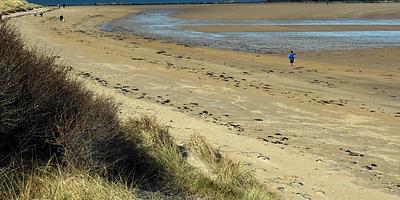
SANDY SHORES
Sandy beaches are incredibly popular places for leisure time. Whether it be for building sandcastles, walking the dog, water sports, or just to relax, each year thousands flock to beaches bringing huge economic benefits to coastal communities across the UK.
As well as having huge benefits for our economy and wellbeing, sandy shores are also ecologically very important habitats, supporting a surprising amount of life.
Sandy shores also sap energy from waves as they break on the shore, providing a natural sea defence for seaside towns. On some beaches, this function has been enhanced by the presence of groynes - structures designed to capture sand as it is transported down the coast.
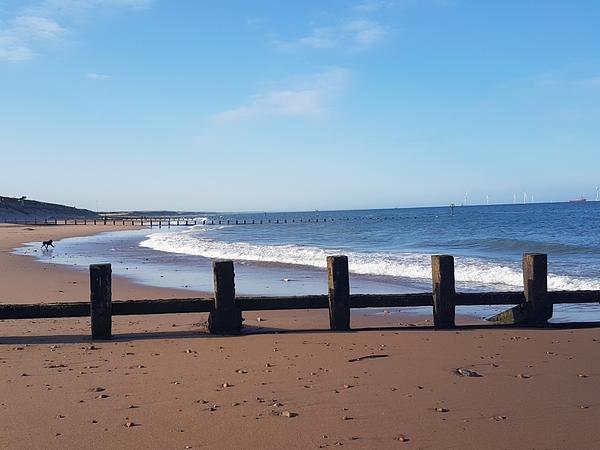
FORMATION
Sandy shores are created anywhere conditions are calm enough for sand particles to be deposited along the coast.
Not all sandy shores look the same. Differences in the type of sand and environmental conditions means beaches vary in composition, stability, and ecology.
Sand on exposed shores will constantly be shifted by wind, strong currents, and high energy waves - a tricky place for species to survive. Sand on sheltered shores on the other hand isn’t moved as much, providing a more stable environment and kinder conditions for animals and plants to grow.
In the right conditions, sand shifted by waves and currents can form interesting coastal features such as ‘bars’ and ‘spits’ – sandy beaches that project into the sea.
INHABITANTS
The type of species found on a sandy shore is determined by a variety of factors, including particle size, turbulence, water content, oxygen levels and organic content.
For marine creatures, the wetter and saltier the sand the better, resulting in the majority of life existing further down the shore.
Most of the inhabitants are out of sight, either hiding in the sediment until the tide returns (such as crabs and shellfish) or moving out with the tide (such as small species of fish). Though the animals are hidden away, there are clues at the surface that give away their existence. Take a closer look the next time you walk along a beach ... you'll be amazed by what you might see...
Species within the sand
Worms
Have you ever noticed small piles of sandy squiggles on the beach? Believe it or not, these are the expelled contents of worm guts known as worm ‘casts’. The creature responsible is the lugworm, most commonly Arenicola marina – a deposit feeder which ingests mouthfuls of sand to access the nutrients surrounding the particles.
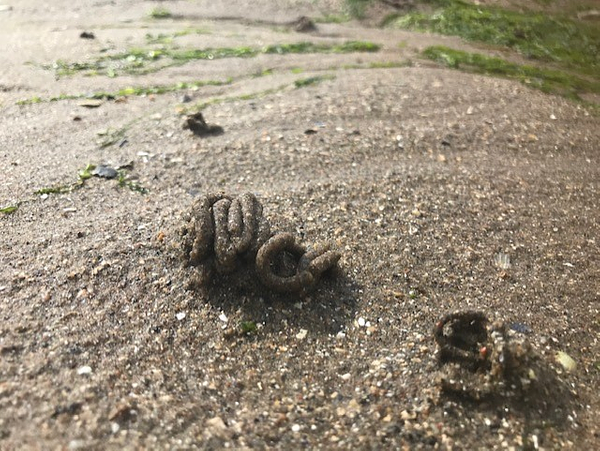
Each worm lives at the bottom of a ‘U-shaped’ burrow and creates a watery one-way system to supply itself with oxygenated water. You can spot the entrance of a burrow by a slight depression in the sand and the exit by the presence of a cast.
Molluscs
Spotting shells is a favourite pasttime for many whist walking along a beach, but where have they come from?
Each shell that washes up with the tide is an empty “house” made by a mollusc (snail-like creatures). Shells on sandy shores have either come from species living within the sand, or transported from different habitats along the coast.
Shells vary in shape, pattern, colour, texture, and size. The appearance of shells depends on the type of mollusc that makes them. In fact, each species makes a shell that is unique to them - a handy way to tell them apart!
SusanDavies.jpg)
The most common molluscs living within sandy shores in the UK shores are cockles, razor shells, tellins, wedge shells and venus shells - ‘bivalves’ with shells that come in two parts and burrow down into the sediment.
Click here to see our shell spotter guide for hints on how to identify common shells of the seashore.
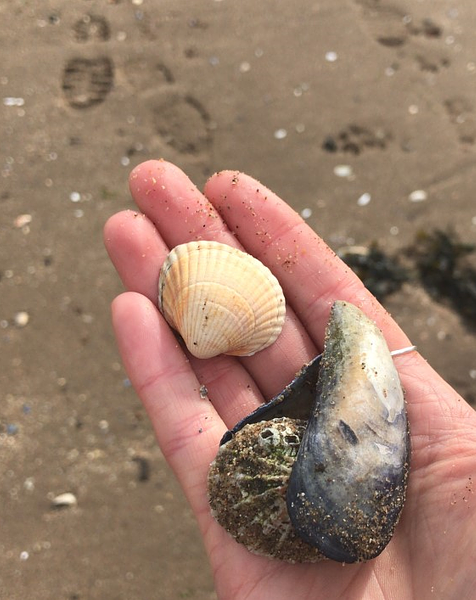
On top of the sand
A variety of birds make use of sandy shores as nesting and feeding grounds.
Waders use their long beaks to probe the sediment for prey. Oystercatchers (Haematopus ostralegus), for example, have impressive, bright-orange beaks with sensory organs at the tip to detect prey hiding in the sand.
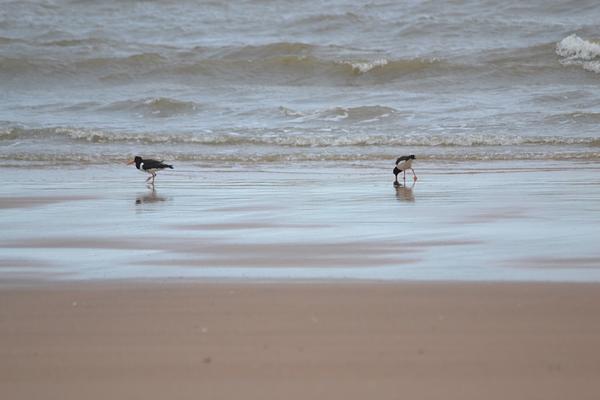
Small shore birds such as dunlin (Calidris alpine), sanderling (Calidris alba) and ringed plover (Charadrius hiaticula) on the other hand have smaller beaks for catching small crustaceans and invertebrates brought in with the tide. You can spot them hurriedly running along the water's edge in pursuit of their prey, often in small groups.
Hardy species of terrestrial plant that are able to withstand the salty, dry, wind-blown conditions of sandy beaches appear at the back of the shore, including frosted orache (Atriplex laciniate) and lyme-grass (Leymus arenarius).
Also found at the top of beaches are lines of washed up seaweed and rotting organic debris. These ‘strandlines’ are smelly places, for sure, but they are also an important 'microhabitats' supporting a different community of species to the rest of the shore.
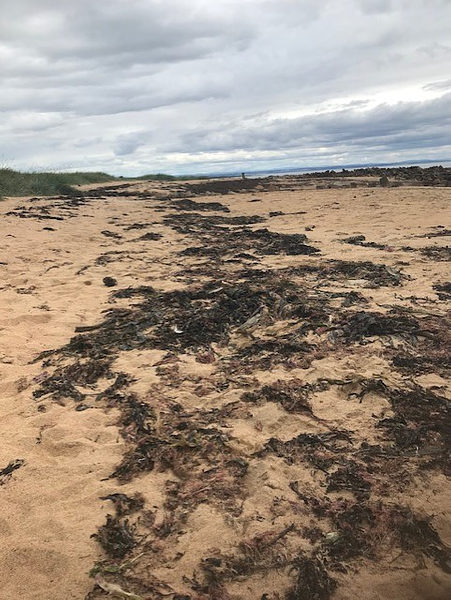
Decyaing material adds nutrients to the environment and provides food for detritivores. Move a patch of rotting seaweed and you’ll be greeted by kelp flies (Coelopa frigida) and sand hoppers (Talitrus saltator) – tiny shrimp-like creatures that move in a hopping motion when disturbed. These and other invertebrates are a good source of food for shorebirds such as turnstone (Arenaria interpres).
Gulls and crows also make use of strandlines, scavenging for scraps amongst the piles of debris.
LOCALISED THREATS
In addition to the large-scale threats facing the marine environment, sandy shores are at risk from the following:
- Human pollution – Sheltered beaches are prone to the accumulation of litter that gets washed up with the tide. Litter can tangle and be ingested by animals. Plastic is of particular concern because it persists in the marine environment and attracts toxic chemicals to their surfaces.
- Dredging – Sand is taken out of shipping routes, docks and harbours, and dumped offshore. This can disrupt the availability and flow of sand in the environment.
